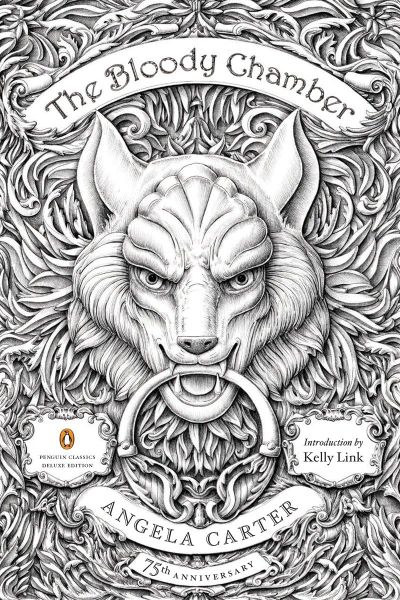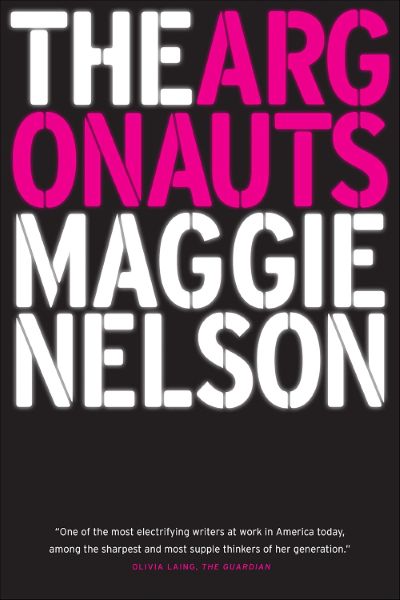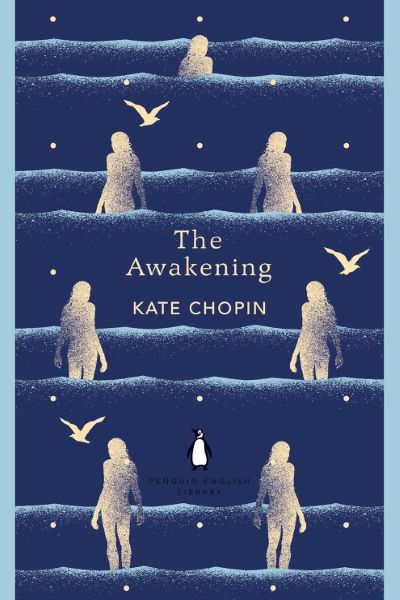The Bloody Chamber and Other Stories
A groundbreaking work of feminist fairy tale reconstruction that subverts classic fairy tales to create new female narratives, exploring the complex relationships between gender power, desire, and female subjectivity.

📝 Book Review
In the innovative wave of 20th-century feminist literature, Angela Carter’s “The Bloody Chamber and Other Stories” functions like a sharp surgical scalpel, using bold and precise strokes to dissect deeply entrenched gender myths in Western culture. This short story collection, published in 1979, not only pioneered an entirely new literary genre of feminist fairy tale reconstruction but also, through its subversive imagination and profound social critique, completely rewrote our understanding of traditional fairy tales and female roles. Through radical rewritings of classic fairy tales, Carter opened up a new realm full of possibilities for women’s literature.
Born in 1940 and passing away in 1992, Carter’s creative career coincided with the height of the second-wave feminist movement. As a writer deeply influenced by psychoanalytic theory, Marxism, and feminist theory, Carter was not content with simple realist narrative but employed mythological, fairy tale, and fantastic elements to explore the deep mechanisms of gender politics. She lived in Japan for two years, an experience that expanded her cultural perspective and influenced her comparative thinking about Eastern and Western gender concepts. Her work fused academic theory with literary creation, possessing both intellectual depth and artistic charm.
Ideological Analysis of Fairy Tales
The core achievement of “The Bloody Chamber” lies in its profound ideological analysis of fairy tales, a seemingly harmless literary form. Carter astutely recognized that traditional fairy tales are far from simple children’s literature but rather cultural products bearing strong gender ideology. These apparently innocent stories actually continuously reinforce patriarchal values, shaping women as passive victims or princesses awaiting rescue. Carter’s rewriting work is not simple role reversal but fundamental subversion of the entire narrative logic of fairy tales.
Carter understood that fairy tales function as what cultural theorists call “ideological state apparatuses”—seemingly neutral cultural forms that actually transmit and reinforce dominant power structures. By exposing the gender politics embedded within these beloved stories, she revealed how patriarchal values are transmitted through culture in ways that appear natural and inevitable.
”The Bloody Chamber”: Reclaiming Female Desire
The titular story “The Bloody Chamber,” Carter’s reinterpretation of the Bluebeard tale, stands as a classic example of her approach. In this version, the young bride is no longer simply a victim but a complex character with sexual desires and curiosity. She is both terrified and fascinated by Bluebeard’s wealth and power, a contradictory psychological state that reflects women’s complex situation in patriarchal society. Through delicate psychological portraiture, Carter reveals the intricate relationships between money, power, and sex, as well as women’s agency within these relationships.
The story’s exploration of female sexual curiosity was revolutionary for its time. Carter refuses to demonize the protagonist’s fascination with her husband’s dark secrets or her attraction to his dangerous charisma. Instead, she presents female sexuality as complex and multifaceted, encompassing not just desire but intellectual curiosity, aesthetic appreciation, and psychological complexity.
The ultimate rescue comes not from a white knight but from female solidarity—the mother’s timely arrival symbolizes the intergenerational transmission of female power. This ending suggests that women’s liberation depends not on patriarchal rescue narratives but on women supporting and empowering each other.
Red Riding Hood Variations: Multiple Strategies of Female Survival
In her rewritings of the Little Red Riding Hood story, Carter created three different versions demonstrating various strategies women might employ when facing danger. From violent retaliation in “The Werewolf” to clever maneuvering in “The Company of Wolves,” to sexual liberation in the final version, Carter provides diverse models of female action. All these versions reject the traditional fairy tale role of women passively awaiting rescue, instead showcasing female intelligence, courage, and desire.
Particularly in the final version, Little Red Riding Hood actively engages in sexual relations with the wolf, a bold depiction that challenges social moral constraints on female sexual behavior. This is not presented as victimization but as active choice—the girl strips off her clothes and laughs as she throws them into the fire, symbolically casting off the social restrictions that would constrain her sexuality.
The wolf in Carter’s version is not simply predator but represents the wild, untamed aspects of sexuality that patriarchal society seeks to control. By choosing to embrace rather than fear this wildness, the protagonist claims ownership over her own sexual nature.
”Beauty and the Beast”: Transformation and Self-Acceptance
Carter’s adaptation of “Beauty and the Beast” equally embodies her subversive imagination. In the traditional version, the Beast’s humanization is achieved through Beauty’s love, a narrative pattern that reinforces women’s sacrificial spirit and responsibility for reforming men. Carter’s version has Beauty herself become the beast, a transformation symbolizing women’s acceptance of their own animal instincts and primal desires.
This is not degradation but liberation—women no longer need to suppress their nature to fit social expectations. The transformation suggests that what patriarchal society labels as “beastly” in women—their appetites, their sexuality, their refusal to be entirely civilized—may actually represent their authentic power.
Gothic Sensuality and the Politics of Language
Carter’s writing style fuses multiple literary traditions, including Gothic fiction, magical realism, and baroque literature. Her language is ornate yet precise, filled with sensory details and symbolic imagery. She skillfully employs contrast and irony, creating tension between beauty and terror, seduction and danger. Her narrative is both poetic and analytical, both sensual and rational, creating a unique feminist literary style.
The lush, sensual quality of Carter’s prose serves important feminist purposes. By reclaiming language traditionally associated with the feminine—the decorative, the sensual, the excessive—she challenges literary hierarchies that privilege spare, “masculine” prose over ornate, “feminine” language. Her baroque style becomes a form of feminist resistance to literary patriarchy.
Revolutionary Approach to Sexuality
Carter’s treatment of sexuality in “The Bloody Chamber” represents one of its most controversial yet valuable aspects. Carter does not avoid female sexual desire but presents it as an important component of women’s liberation. Her depictions are neither obscene nor evasive but explore the relationship between sex and power in honest and complex ways. She points out that women’s sexual liberation cannot be simply understood as sexual freedom but includes recognition and acceptance of one’s own desires as well as subjective agency in sexual relationships.
This approach was radical for its time and remains provocative today. Carter refuses to separate sexuality from power dynamics, instead exploring how sexual relationships can be sites of both oppression and liberation. Her work suggests that true sexual liberation requires not just the right to say yes but the power to determine the terms of sexual engagement.
Postmodern Literary Innovation
This work’s contribution to postmodern literature should not be overlooked. Through rewriting and pastiche of classic texts, Carter embodies postmodernism’s questioning of originality and authority. Her work is both homage to and subversion of tradition. This intertextual writing strategy provides important technical reference for subsequent feminist writers.
Carter’s method of taking canonical texts and revealing their ideological foundations became a model for feminist cultural criticism. She demonstrated how seemingly innocent cultural products could be revealed as vehicles for patriarchal ideology, inspiring countless scholars to apply similar analytical methods to everything from Disney films to fashion magazines.
Psychological Dimensions of Female Development
On a psychological level, “The Bloody Chamber” provides important perspectives for understanding female psychological development. Through fairy tale archetypes, Carter explores women’s psychological transformation from childhood to adulthood, particularly the fears, curiosity, and desires during sexual awakening. Her analysis engages interestingly with psychoanalytic theories about female psychological development.
Carter’s stories map the territory between girlhood and womanhood, exploring how young women navigate the dangerous passages of sexual and social maturation. Her fairy tale revisions suggest that traditional coming-of-age narratives for women are inadequate, offering instead models that preserve female agency and desire.
Violence and Reality
Carter’s treatment of violence themes also deserves deep analysis. Her stories are filled with blood and violence, but this violence is not for sensory stimulation but to reveal the violent nature of gender relations in reality. She points out that beneath the gentle surface of fairy tales lies cruel reality—women frequently face threats of physical and psychological violence. By making this violence explicit, Carter forces readers to confront the real predicaments women face.
The violence in Carter’s stories is often cathartic, allowing female characters to fight back against their oppressors. This reversal of traditional victim narratives empowers readers to imagine new possibilities for female resistance and self-defense.
Maternal Power and Female Solidarity
“The Bloody Chamber’s” exploration of motherhood themes is equally important. In multiple stories, mother figures play crucial roles. They are no longer absent or evil characters from traditional fairy tales but symbols of female power and wisdom. The portrayal of mother-daughter relationships reflects the importance of female cultural transmission and the necessity of mutual support among women.
Carter’s mothers are not idealized figures of sacrifice but complex women who understand the dangers their daughters face and act decisively to protect them. This represents a significant departure from fairy tale traditions that either eliminate mothers entirely or present them as competitors with their daughters.
Global Influence and Contemporary Relevance
While Carter’s rewritings are based on Western fairy tale traditions, the gender analysis methods she proposes have universal applicability. Feminist scholars and writers worldwide have applied similar methods to analyze and rewrite indigenous myths and legends, demonstrating the cross-cultural value of Carter’s work.
In contemporary contexts, against the backdrop of #MeToo and global women’s rights movements, “The Bloody Chamber’s” themes seem especially relevant. The protagonist’s struggle for bodily autonomy, resistance to unwanted sexual attention, and refusal to be defined solely through relationships with men are all core issues in contemporary feminist discussions.
The work’s complex portrayal of desire, power, and female agency speaks directly to contemporary debates about consent, female sexuality, and women’s right to determine their own narratives. Carter’s insistence that women can be both sexual beings and agents of their own stories remains radical and necessary.
Educational Impact and Critical Thinking
In educational settings, “The Bloody Chamber” has become an important text in literature curricula. It not only provides excellent literary works for student appreciation but, more importantly, teaches students how to engage in critical reading and identify implicit ideological information in texts. This critical thinking ability is crucial for students’ overall development.
Carter’s work demonstrates how literature can be both aesthetically powerful and politically engaged, showing students that great art and social criticism are not mutually exclusive but can enhance each other.
Artistic Legacy and Continuing Influence
From a literary history perspective, “The Bloody Chamber” marks women’s literature’s transition from direct political expression to more complex artistic creation. Carter proved that feminist literature need not sacrifice artistic quality to convey political messages but can achieve more profound and lasting impact through high-quality literary creation.
Her influence can be seen in contemporary works ranging from Margaret Atwood’s historical fiction to young adult literature that reimagines fairy tales for new generations. Carter’s demonstration that cultural texts are not fixed but can be reinterpreted and transformed continues to inspire writers and scholars.
Visual Arts and Cross-Media Adaptation
This work has also significantly influenced visual arts and film adaptations. Carter’s ornate and sensual textual descriptions have provided rich inspiration for visual artists. Her collaboration with director Neil Jordan on the film “The Company of Wolves,” based on stories from this collection, further expanded the work’s influence across media.
These cross-media adaptations demonstrate the visual power of Carter’s imagination and the continuing relevance of her themes in contemporary culture.
Conclusion: Imagination as Revolutionary Tool
Today, “The Bloody Chamber and Other Stories” remains an important classic of feminist literature. It not only provides us with methods for rereading traditional culture but, more importantly, inspires us to think about how to create new stories that express women’s experiences and aspirations.
Carter’s work reminds us that culture is not fixed but can be reinterpreted and transformed. In the current context where cultural diversity and gender inclusivity receive increasing attention, her innovative spirit and critical courage remain important sources of inspiration.
This work proves the important role of imagination in social transformation. Literature not only reflects reality but can create new possibilities for reality. Through her radical reimagining of beloved cultural texts, Carter demonstrated that feminist politics and artistic excellence could work together to create works that are both beautiful and transformative.
“The Bloody Chamber” stands as testament to the power of feminist imagination to envision new worlds where women are neither victims nor saints but complex human beings with desires, agency, and the right to determine their own stories. In this sense, Carter’s fairy tales are not just revisions of old stories but blueprints for new possibilities—not just for literature but for life itself.
Discussion
读书讨论
分享您对这本书的感想和看法,与其他读者交流见解
加入讨论
分享您对这本书的感想和看法,与其他读者交流见解
加载评论中...
Book Info
🛒 Get This Book
 Buy on Amazon
Buy on Amazon Related Books
读书讨论
分享您对这本书的感想和看法,与其他读者交流见解
加入讨论
分享您对这本书的感想和看法,与其他读者交流见解
加载评论中...

